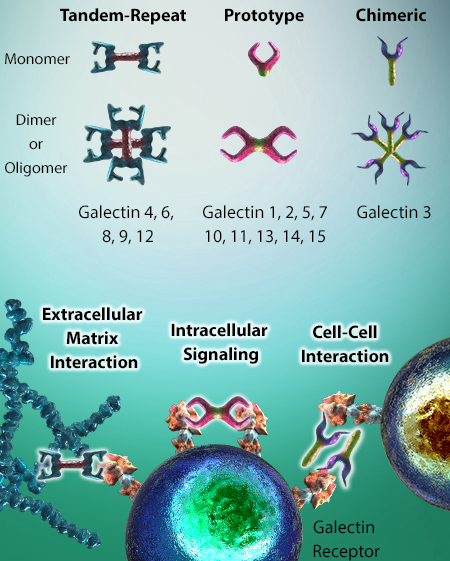| Galectins are a family of lectins that recognize β-galactoside carbohydrates. Each galectin is specialized to bind certain glycoproteins containing an oligosaccharide sequence. As such, they are involved in a variety of activities, including mRNA splicing, apoptosis, cell cycle regulation, cell activation, differentiation, adhesion, and migration. Galectins can even be involved in some disease states as they can positively or negatively manipulate immune responses and inflammation. BioLegend offers several bioactive recombinant galectins as well as antibodies for their detection. |
| 15 mammalian galectins have been identified, and they are grouped based on their carbohydrate-recognition domains (CRD). Galectin 1, 2, 5, 7, 10, 11, 13, 14, and 15 are known as the “prototype” class and contain one CRD. The “tandem-repeat” class (galectin 4, 6, 8, 9, and 12) have two CRDs joined by amino acid sequences. Galectin 3 is one of a kind as it is the only “chimeric” type with one CRD and a non-lectin region. Some galectins can self-dimerize or oligomerize, which allows them to generate a stronger signal. Galectins help cells interact with the extracellular matrix or other cell types. They also aid in intracellular signaling. Adapted from Li, S. et al. 2013. J. Clin. Cell Immunol. 4:5. Pubmed |


 Login / Register
Login / Register 






Follow Us